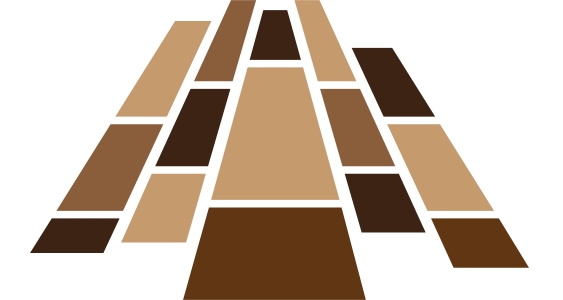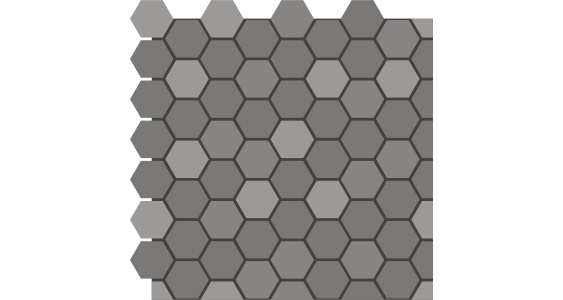Technology plays a pivotal role in shaping aesthetics and functionality in commercial flooring. One standout innovation in recent years is luxury vinyl tile (LVT), a versatile and heavy duty flooring solution that has undergone remarkable advancements.
Let’s explore the evolution of commercial vinyl flooring and the cutting-edge technologies driving the popularity of LVT materials in commercial spaces.
Understanding Luxury Vinyl Tile
Luxury vinyl tile, commonly called LVT, is a synthetic flooring material engineered to replicate the aesthetics of natural materials such as wood or stone. Unlike traditional vinyl flooring, LVT has experienced a remarkable surge in popularity owing to its exceptional durability, cost-effectiveness, and ability to emulate the appearance of high-end materials.
Over the years, progress in design, composition, and installation methods has shaped the gradual evolution of luxury vinyl tile (LVT), establishing it as a premier option for homeowners, designers, and business owners who value excellence.
With its exceptional durability, versatile styles, and easy maintenance, LVT has become the go-to flooring choice, offering endless possibilities to create stunning and functional spaces.

Whether replicating the natural beauty of hardwood or capturing the elegance of stone, LVT continues to redefine flooring standards, elevating interiors with its enduring charm and unmatched performance.
Advancements In Design
One of the key drivers behind LVT’s widespread adoption is its aesthetic appeal. Advancements in design have enabled commercial vinyl flooring to closely emulate the textures, patterns, and colors of natural materials, providing a visually stunning yet practical flooring option.
High-resolution digital printing technology has played a pivotal role in achieving realistic designs, allowing for a wide range of customization to suit diverse commercial spaces.
Embossing techniques have further enhanced the tactile experience of LVT, replicating the grainy texture of hardwood or the uneven surface of natural stone.
These advancements in design have made LVT a favorite in sectors where aesthetics matter, such as retail spaces, corporate offices, and hospitality environments.
Composition Innovations
Traditionally, LVT consisted of layers of PVC (polyvinyl chloride) and filler materials. However, recent advancements have led to multi-layered compositions that enhance performance and sustainability. The layers typically include a wear layer for durability, a design layer for aesthetics, and a backing layer for stability.
One notable innovation is the incorporation of rigid core technology. Rigid core LVT, often called WPC (wood plastic composite) or SPC (stone plastic composite), adds a dimension of sturdiness and stability.

These rigid core LVT options are water-resistant, making them suitable for spaces prone to moisture, such as bathrooms or kitchens.
This innovation has expanded the range of applications for LVT, making it a viable choice for various commercial settings.
Installation Methods
Traditional flooring installation processes can be time-consuming and disruptive because of the debris and work involved. In response, advancements in LVT technology have introduced innovative installation methods, such as click-and-lock systems.
These systems allow for a hassle-free, floating floor installation, reducing downtime and minimizing adhesive needs.
Furthermore, advancements in installation ease have made LVT a popular type of flooring choice for renovations and quick transformations.
The interlocking mechanisms not only simplify the installation process but also contribute to the overall stability and longevity of the flooring.
Environmental Considerations
As sustainability continues to gain prominence across industries, such as construction and design, the evolution of luxury vinyl tile (LVT) has also embraced environmental considerations. Manufacturers are now emphasizing eco-friendly practices, incorporating recycled materials in the production of LVT.
Moreover, significant advancements in manufacturing processes have resulted in reduced waste generation, further solidifying LVT as a highly sustainable flooring option.
With its commitment to environmental consciousness, LVT stands as a testament to the positive impact that can be achieved through innovation and responsible manufacturing practices.
Conclusion
Luxury vinyl tile has undergone significant advancements, transforming it into a leading player in the commercial flooring arena.
From realistic design replication to enhanced durability and environmentally conscious manufacturing, LVT has become a go-to choice for architects, designers, and business owners.
As technology continues to propel the evolution of LVT, the future promises even more innovative solutions that will shape the landscape of commercial flooring for years to come.
See Also: Houston’s Premier Tile Destination: Tile Center USA’s Excellence Unveiled









